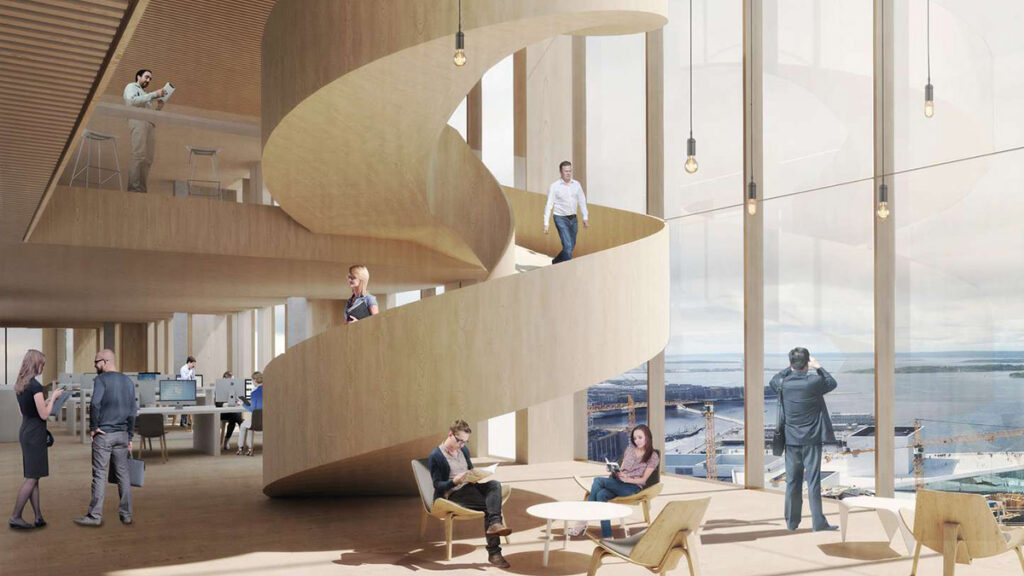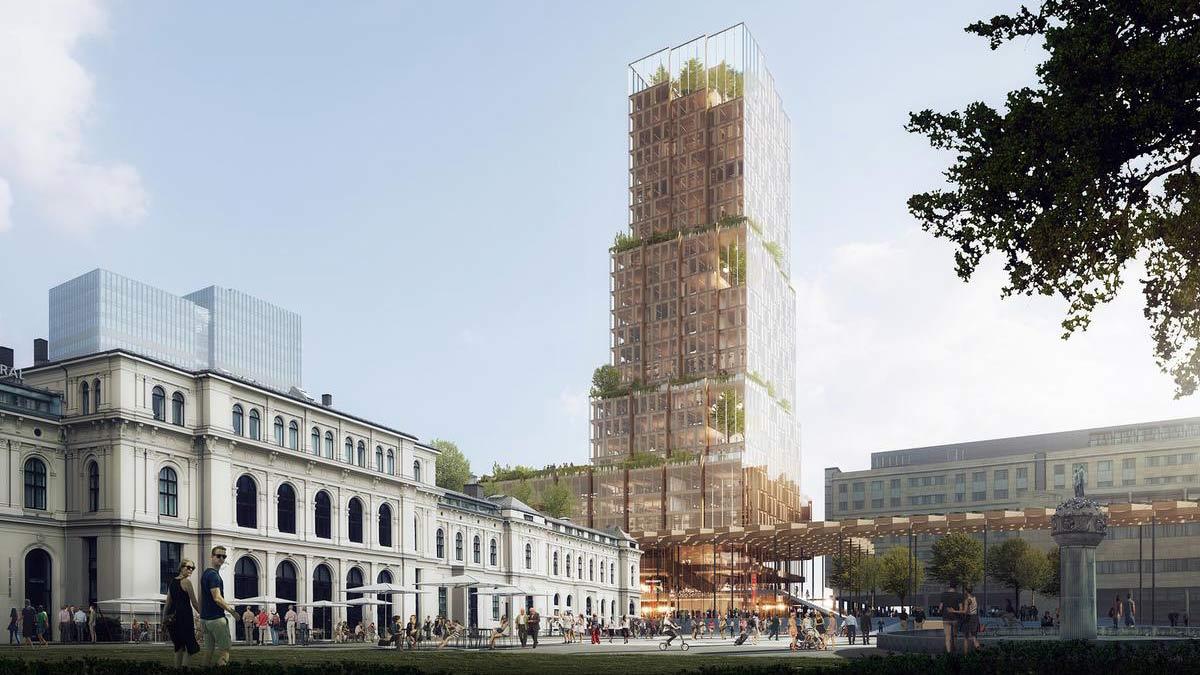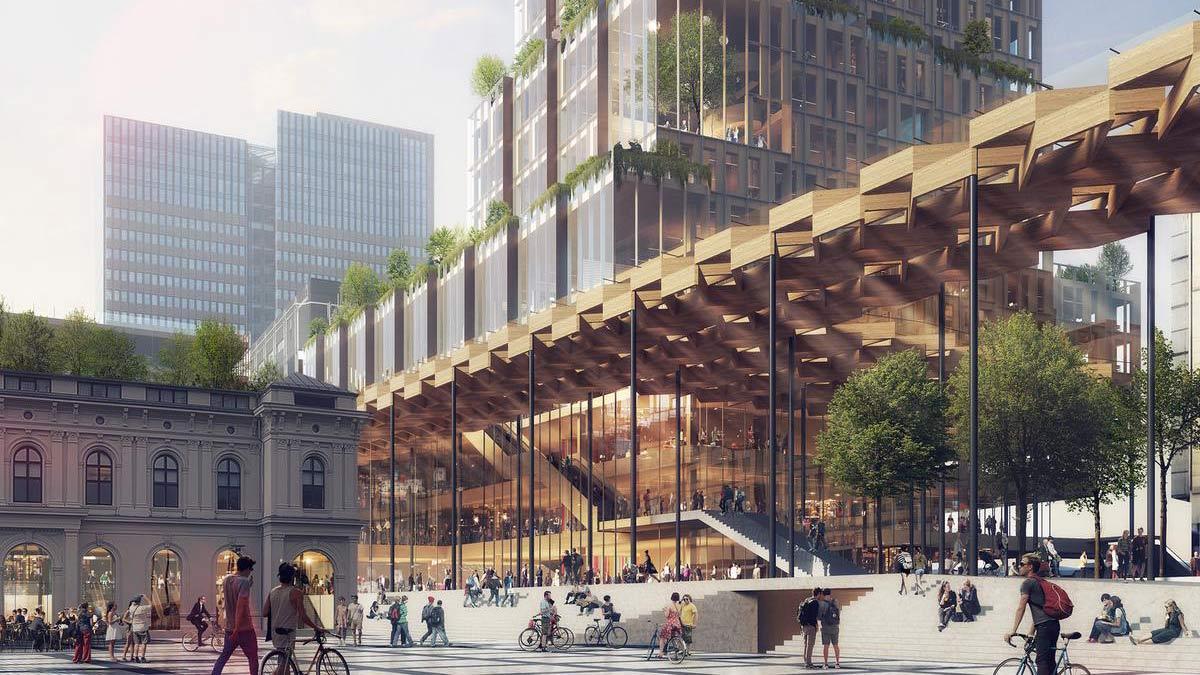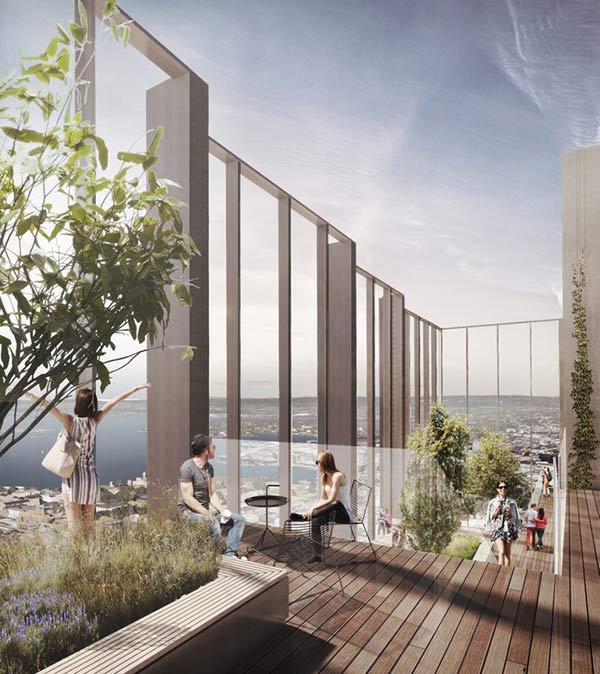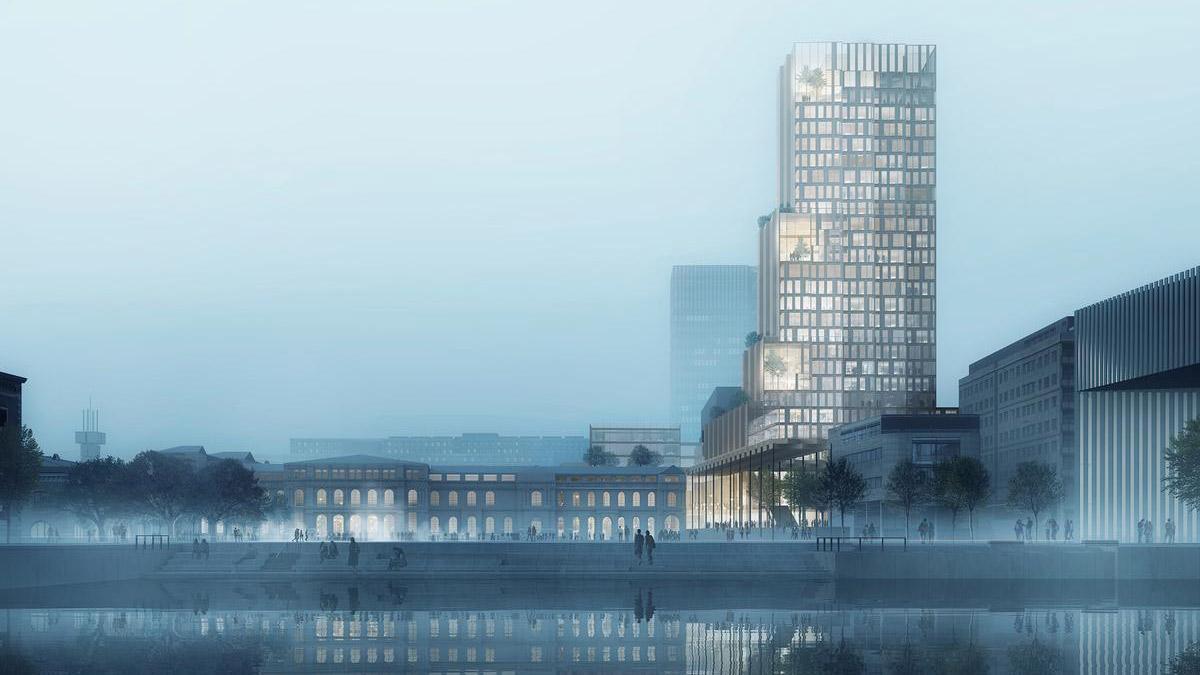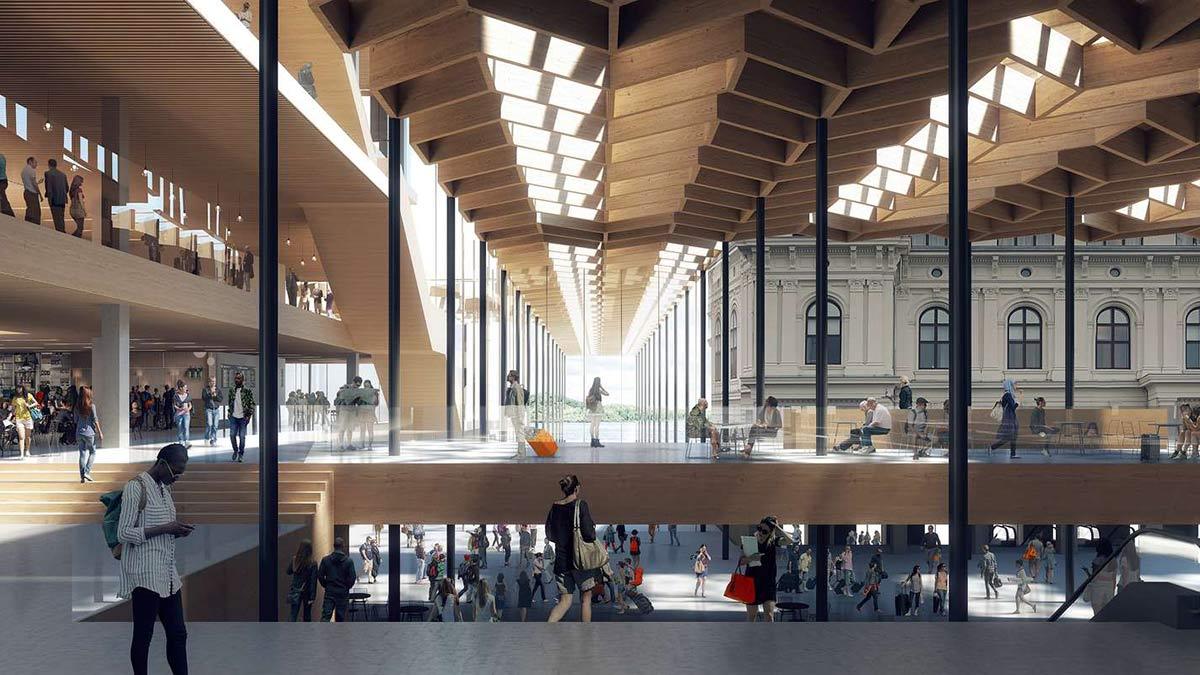Back to the future
Oslo was once built entirely of wood. The project chosen to redesign the area around its railway station heralds the return of this traditional building material to the Scandinavian metropolis. A spectacular office tower with an innovative hub is being developed, named Fjordporten.
The history of the Norwegian capital spans around one thousand years. With the exception of churches, castles and around 400 townhouses, medieval Oslo was built from timber. After the Great Fire of 1624, the city was relocated and rebuilt according to Renaissance ideals. From then on, bricks and stone were the preferred choice for construction. But recently, this traditional building material began to be readopted. The trendsetting urban development project Fjordporten at Oslo’s main railway station is a prime example.
Record holders in urban timber construction
When it comes to timber construction, Norway has lately become the world champion. The small town of Brumunddal, 140 kilometres to the north of Oslo, is the site of what is currently the world’s highest timber high-rise, Mjøstårnet. At 85.4 metres high, the special feature of this mixed-use tower is its omission of a concrete core. Although future plyscrapers such as the WoHo in Berlin and The Dutch Mountains in Eindhoven are going to climb even higher into the sky in the near future, they differ from this Norwegian tower because they are planned as hybrid constructions using a combination of timber and concrete. This makes them comparable to only a limited extent.
The new urban development project Fjordporten Oslo S aims to push ahead with sustainable urbanization using timber construction. Back in 2017, Bane NOR Eiendom – a subsidiary of the state railway company – announced an architecture competition. Besides a future-proof building method, the client was looking for a design that would interact with its surroundings and offer good infrastructure to enable further development in the city quarter.
A tree-covered tower
The master plan for “Nordisk Lys” (Nordic Light) by Reiulf Ramstad Architects and C.F. Møller Architects was chosen ahead of designs submitted by renowned architects such as Bjarke Ingels and Christoph Ingenhoven. The winning design has a tree-covered tower with stacked cubes as its fundamental element. At the base of the tower, a pergola made of honeycomb-shaped timber elements connects the high-rise structure with the surrounding public space.
A clear architectural identity and a thorough sustainability profile define the project’s end result.
C.F. Møller Architects
The jury comments: “‘Nordic Light’ takes its strength from a controlled and careful form expression.” Travellers will be offered a new kind of experience and a positive spatial encounter in the hub. The project description by architectural firm C.F. Møller reads: “By combining tradition and innovation, Fjordporten at Oslo central station merges transport, work, leisure time, culture and business into a forward-oriented and robust hub.”
Closed-loop cycle of raw materials
The master plan aims to make a significant contribution towards reviving the district around the listed railway station building. Besides a number of shops and eateries, the development project includes a cultural and conference centre, and also a hotel. The architects explain in their master plan: “The primary aim for Fjordporten is to combine effective traffic logistics with attractive internal and external urban spaces. This is obtained by high architectural quality and streamlined transfers between the various means of transport. A clear architectural identity and a thorough sustainability profile define the project’s end result.”
The building’s materials are a subtle reference to the time when the city was built from wood.
C.F. Møller Architects
Implementing this design is a real constructional challenge. The timber structure of the high-rise is clad with a glass facade that reveals lush vegetation inside and outside the building. The storeys are frequently interrupted by vertical openings where plants serve as “green lungs”. These gigantic winter gardens with a timber spiral staircase will be visible for miles around.
Timber combined with concrete
As a green building, this timber high-rise will be certified according to the UK sustainability assessment method BREEAM. Its focus is on the closed-loop cycle of raw materials and cost evaluation throughout the entire life cycle of the building.
A hybrid design has been chosen as the method of construction, with timber and concrete combined to create the structure. The expansive tower facade is made of high-tech glass, the architects reveal. Their project description explains: “The building’s materials are a subtle reference to the time when the city was built from wood.”
Text: Gertraud Gerst
Translation: Rosemary Bridger-Lippe
Renderings: C.F. Møller Architects
